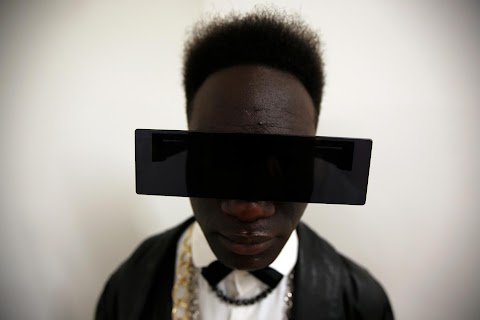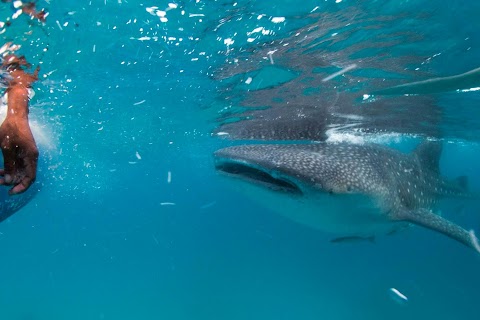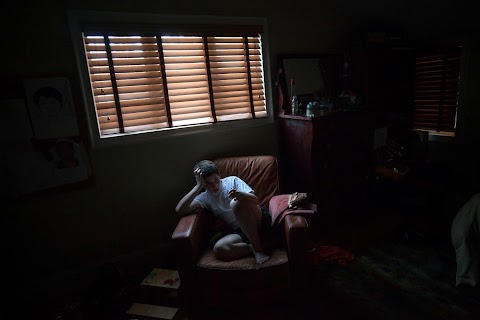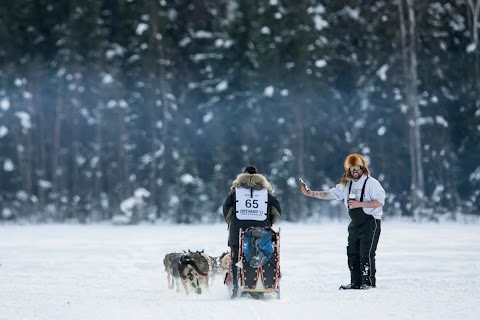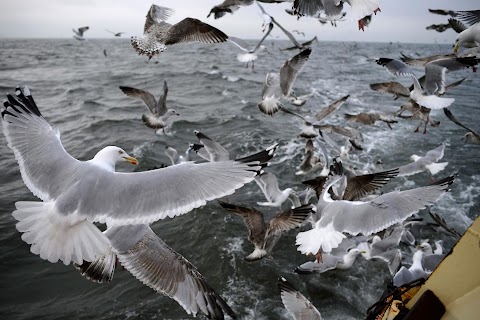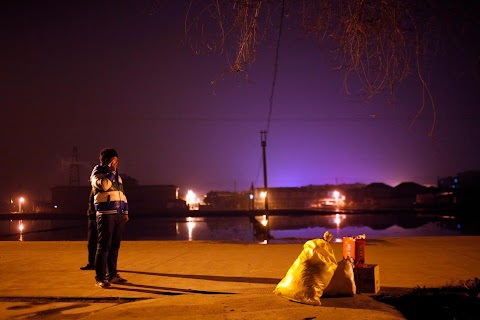
Mission (not quite) to Mars
 Jim Urquhart
Jim Urquhart
A member of Crew 125 EuroMoonMars B mission stands clad in a spacesuit and helmet in the middle of a barren, red landscape.
He is not, however, on Mars. Instead, he is in the Utah desert as part of a crew working at the Mars Desert Research Station (MDRS). The facility, run by a non-profit organisation, uses surrounding Mars-like terrain to research and simulate exploration of the Red Planet.

A crew of scientists, students and enthusiasts live together in the Utah base with limited space and supplies to mimic conditions on Mars.
The research station was established by the Mars Society, a non-profit organisation that aims to promote the exploration of our solar neighbour.

Crew members venture out in simulated space suits to collect geological samples that will be studied at the MDRS.
By carrying out field work under conditions similar to those on Mars, they seek to learn more about actually exploring the Red Planet.
Slideshow

The MDRS stands in the stark, red landscape of Utah.

Names of members of past crews are stuck on the doors at the research station.

Matt Cross, an engineer with Crew 125 EuroMoonMars B mission, works on a rover remote control vehicle.

A mapping researcher and health and safety officer checks on plants grown at the base.

Melissa Battler, a geologist and crew commander, goes out into the desert in her simulated spacesuit.

Crew members walk off to begin their day's work.

They will collect rock samples to study the landscape's geology.

They collect pieces of rock.

As the light dims, crew members return to base.

Csilla Orgel makes her way back.

Crew members arrive home.

Melissa Battler takes off her spacesuit after a day out in the desert.

During the cooler winter months, crews of six scientists live, eat, work and sleep in the small crew habitation quarters.

With limited amounts of electricity, food, oxygen and water, everything necessary for human survival must be produced, fixed and replaced on site.
“The research station is set perfectly in a landscape that could easily pass as an alien world.”
I may be a Red Shirt, but I made it to Mars - at least sort of.
According to Urban Dictionary (the finest source of American literature) a Red Shirt is defined as: “A character in a science fiction or adventure story whose sole dramatic purpose is to get killed by the story's villain and/or itinerant monster. Taken from the propensity of security officers on the original Star Trek series (who typically wore red uniform tops) to be killed in the episodes' pre-opening-credits teasers.”
When I was young, I wanted to be an astronaut, but I never had the discipline to follow through. At one point, I even wanted to be a scientist, but I barely made it out of high school and later dropped out of college.
Still, despite my Red Shirt tendencies, I have always been attracted to spending time with people who put their minds and bodies to the test. I even married a woman who has three Master's degrees and is working on her Ph. D.
I have also always prided myself on consuming as much science news as possible. To me, the search for tangible knowledge is the fuel of dreams; it’s something that will lead you to life’s adventures.
So, with that said, when I heard about the Mars Desert Research Station in the desert of southern Utah, I knew I had to go.
Travelling through the Utah desert is always a treat. It is a stark and barren landscape, where mankind has not left much of a mark. In many places it is devoid of life.
The research station is set perfectly in a landscape that could easily pass as an alien world. At least on film sets, countless creatures and space travellers have met their fates here.
But the research centre is not about recreating movies: much of the science that takes place on site is based on a simulation of the conditions and environment of Gale Crater on Mars, which the Curiosity rover is exploring.
When I reached the station, I was greeted by a young crew of excited scientists. I am in my mid 30s and I am sure I had 10 years on some of these faces. But they were my heroes, with awesome titles like Commander, XO, Habitat Engineer and Health and Safety Officer.
During the cooler winter months, crews of six scientists (geologists, biologists, engineers and many others) simulate how it would be to live on Mars and how you would be able to do hands-on science on the red planet.
It may be uncomfortable. You only have so much electricity, food, oxygen and water. Everything you need to survive has to either be produced on site or brought with you, and you have to be able to fix it if it breaks down.
You can also only shower every few days and for no more than a couple minutes at a time in order to save water. But despite that, the station did not smell like a gerbil cage.
The Mars Society has been in charge of creating an environment for experts and students to study how science could be done on the red planet. Over the last 10 years, 32-year-old geologist Melissa Battler has spent over 200 days living and working in a Mars simulation either in the desert of Utah or on Devon Island in the Arctic.
She was the crew commander on the mission I spent time with, leading a team through a geological study of rock formations, which are very similar to ones found on Mars.
It’s her research and others like her that could pave the way for us to make the leap away from this planet. But it takes serious dedication. Over the past 10 years, she has worked an average of nearly three weeks a year in a space suit mock-up, trying to do her job.
Geologists rely on their sense of sight, touch and even taste to unravel stories from stone. So imagine trying to do that job with three or more senses taken away!
But it’s this type of dedication I found in all of the crew members on site.
There are guys there like Matthew Cross, whose background is in engineering and who is studying how to make rovers work alongside man during missions.
Could his work bring R2D2 from Star Wars to life on a distant world? Who knows…
(Writing by Jim Urquhart; Editing by Hannah Vinter)

Volker Maiwald, executive officer and habitat engineer with Crew 125 EuroMoonMars B mission, walks among the rock formations of the Utah desert.


